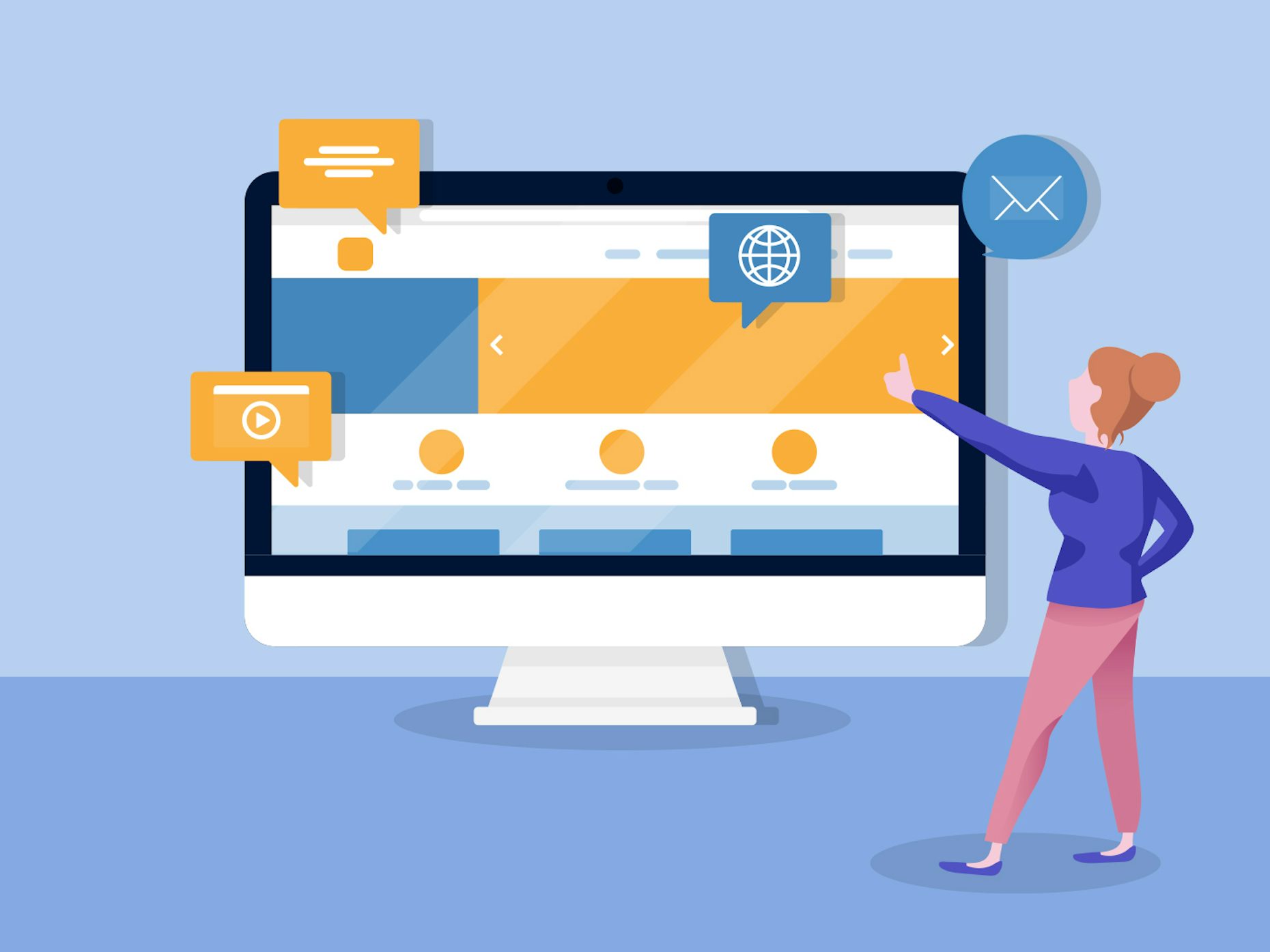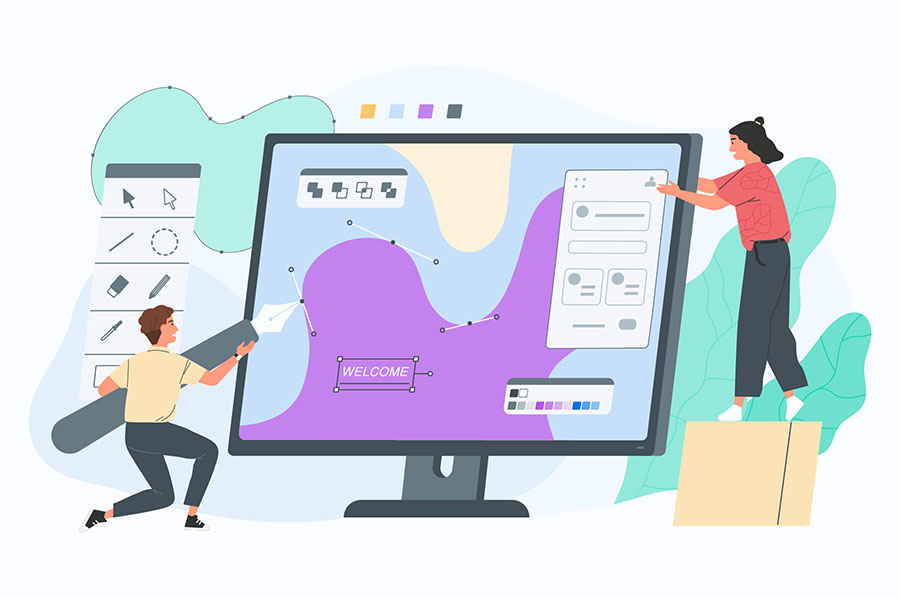All Categories
Featured
Table of Contents
- – Penner Home - Durham Web Design - Penner Web D...
- – Sustainable Web Design: Home Tips and Tricks:
- – Web Design Tools & Software - Webflow Tips an...
- – Custom Website Design And Marketing - Inmotio...
- – Awwwards - Website Awards - Best Web Design T...
- – 12 Essential Tips For Improving Your Web Desi...
- – Web Design Inspiration : The Best Website De...
- – 53 Web Design Tools To Help You Work Smarter...
- – What Is Web Design, How To Do It Right And B...
- – Web Developers And Digital Designers - Burea...
- – Wicky Design: Philadelphia Web Design Tips a...
Penner Home - Durham Web Design - Penner Web Design ... Tips and Tricks:
Quick summary Usability and the utility, not the visual design, identify the success or failure of a website. Given that the visitor of the page is the only person who clicks the mouse and therefore chooses whatever, user-centric design has actually developed as a standard approach for successful and profit-oriented website design - web design frederick md.
and the utility, not the visual style, identify the success or failure of a site. Given that the visitor of the page is the only person who clicks the mouse and for that reason chooses everything, user-centric style has become a standard approach for successful and profit-oriented web style. After all, if users can't use a function, it might too not exist.
g. where the search box need to be put) as it has actually already been carried out in a variety of posts; rather we concentrate on the approaches which, used appropriately, can result in more sophisticated design decisions and simplify the process of perceiving provided details. Please observe that you might be interested in the usability-related articles we have actually published prior to: Principles Of Great Website Design And Reliable Web Style Guidelines, In order to use the principles properly we initially require to comprehend how users connect with websites, how they believe and what are the standard patterns of users' behavior.
Sustainable Web Design: Home Tips and Tricks:
Visitors look at each brand-new page, scan a few of the text, and click the first link that catches their interest or vaguely looks like the important things they're trying to find. In fact, there are big parts of the page they do not even look at. A lot of users look for something intriguing (or beneficial) and clickable; as quickly as some appealing candidates are discovered, users click.
If a page offers users with premium content, they want to jeopardize the content with advertisements and the design of the site. This is the reason that not-that-well-designed websites with premium material acquire a lot of traffic over years. Content is more important than the style which supports it.

Users do not check out, they scan. Notice how "hot" locations abrupt in the middle of sentences. This is typical for the scanning process. Very simple concept: If a site isn't able to fulfill users' expectations, then designer stopped working to get his job done properly and the company loses money. The higher is the cognitive load and the less intuitive is the navigation, the more ready are users to leave the website and look for alternatives.
Web Design Tools & Software - Webflow Tips and Tricks:
Neither do they scan webpage in a linear style, going sequentially from one website section to another one. Instead users satisfice; they choose the first reasonable alternative. As soon as they find a link that appears like it may result in the objective, there is a very great opportunity that it will be immediately clicked.
It doesn't matter to us if we understand how things work, as long as we can use them. If your audience is going to act like you're designing signboard, then design fantastic billboards." Users want to be able to manage their web browser and count on the constant information presentation throughout the site.
If the navigation and site architecture aren't instinctive, the variety of concern marks grows and makes it harder for users to comprehend how the system works and how to obtain from point A to point B. A clear structure, moderate visual hints and easily recognizable links can help users to find their path to their objective.
Custom Website Design And Marketing - Inmotion Hosting Tips and Tricks:

claims to be "beyond channels, beyond products, beyond circulation". What does it suggest? Considering that users tend to explore sites according to the "F"-pattern, these 3 declarations would be the first components users will see on the page once it is filled. The style itself is basic and instinctive, to comprehend what the page is about the user needs to search for the response.
Once you have actually achieved this, you can communicate why the system is helpful and how users can take advantage of it. Individuals won't utilize your website if they can't discover their way around it. 2. Don't Misuse Users' Persistence, In every task when you are going to provide your visitors some service or tool, attempt to keep your user requirements very little.
First-time visitors want to, not filling long web types for an account they may never use in the future. Let users check out the site and find your services without forcing them into sharing private data. It's not affordable to require users to go into an email address to evaluate the function.
Awwwards - Website Awards - Best Web Design Trends Tips and Tricks:
And that's what you want your users to feel on your web site. The registration can be done in less than 30 seconds as the form has horizontal orientation, the user does not even need to scroll the page.
A user registration alone is adequate of an obstacle to user navigation to cut down on incoming traffic. 3. Manage To Focus Users' Attention, As websites offer both fixed and vibrant material, some elements of the interface attract attention more than others do. Certainly, images are more distinctive than the text simply as the sentences marked as vibrant are more appealing than plain text.
Focusing users' attention to specific areas of the site with a moderate usage of visual aspects can help your visitors to get from point A to point B without thinking of how it in fact is expected to be done. The less question marks visitors have, the they have and the more trust they can develop towards the business the site represents.
12 Essential Tips For Improving Your Web Design In 2022 Tips and Tricks:
4. Strive For Function Direct exposure, Modern web designs are normally slammed due to their approach of directing users with visually appealing 1-2-3-done-steps, big buttons with visual impacts etc. But from the style perspective these elements actually aren't a bad thing. On the contrary, such as they lead the visitors through the website material in a very basic and easy to use method.
The website has 9 primary navigation choices which show up at the first look. The choice of colors might be too light. is a fundamental principle of successful interface design. It does not really matter how this is attained. What matters is that the material is well-understood and visitors feel comfy with the method they interact with the system.
com gets directly to the point. No cute words, no overemphasized declarations. Rather a price: simply what visitors are trying to find. An optimal service for reliable writing is touse brief and succinct phrases (come to the point as rapidly as possible), use scannable design (categorize the content, utilize several heading levels, utilize visual elements and bulleted lists which break the flow of consistent text blocks), usage plain and unbiased language (a promotion doesn't require to seem like ad; provide your users some sensible and objective factor why they should use your service or remain on your website)6.
Web Design Inspiration : The Best Website Design Ideas Tips and Tricks:
Users are rarely on a website to enjoy the style; additionally, in many cases they are trying to find the details despite the design - web design frederick md. Make every effort for simpleness rather of intricacy. From the visitors' point of view, the very best site style is a pure text, with no ads or more material blocks matching exactly the query visitors utilized or the material they have actually been trying to find.
Finch plainly provides the information about the website and offers visitors a choice of options without overcrowding them with unneeded content. 7. Do not Hesitate Of The White Space, In fact it's actually tough to overstate the value of white area. Not only does it assist to for the visitors, but it makes it possible to view the details provided on the screen.
Complex structures are more difficult to read, scan, analyze and work with. If you have the choice between separating 2 design segments by a visible line or by some whitespace, it's typically much better to use the whitespace solution. (Simon's Law): the better you manage to offer users with a sense of visual hierarchy, the easier your material will be to view.
53 Web Design Tools To Help You Work Smarter In 2022 Tips and Tricks:
The exact same conventions and rules need to be used to all elements.: do the most with the least amount of cues and visual components. 4 major points to be thought about: simplicity, clearness, distinctiveness, and emphasis. Simplicity consists of only the aspects that are most important for interaction. Clearness: all elements should be developed so their meaning is not ambiguous.
Conventions Are Our Buddies, Conventional style of website elements doesn't lead to a boring web site. As they lower the finding out curve, the requirement to figure out how things work. It would be an use problem if all sites had different visual discussion of RSS-feeds. That's not that various from our regular life where we tend to get utilized to fundamental concepts of how we arrange data (folders) or do shopping (placement of products).
understand what they're anticipating from a site navigation, text structure, search positioning etc. A case in point from functionality sessions is to equate the page in Japanese (presuming your web users don't understand Japanese, e. g. with Babelfish) and offer your use testers with a task to find something in the page of various language.
What Is Web Design, How To Do It Right And Best Skills - Rock ... Tips and Tricks:
Test Early, Test Typically, This so-called TETO-principle needs to be applied to every web style project as usability tests typically supply into significant issues and issues related to a given design. Test not too late, not too little and not for the incorrect factors.
Some important indicate remember: according to Steve Krug, and screening one user early in the task is better than testing 50 near completion. Accoring to Boehm's first law, mistakes are most frequent during requirements and style activities and are the more expensive the later they are removed.
That means that you develop something, test it, repair it and then evaluate it again. There might be issues which haven't been discovered throughout the very first round as users were virtually obstructed by other problems.
Web Developers And Digital Designers - Bureau Of Labor ... Tips and Tricks:

This holds for designers. After you have actually worked on a website for couple of weeks, you can't observe it from a fresh perspective any longer. You know how it is developed and for that reason you understand exactly how it works you have the wisdom independent testers and visitors of your site wouldn't have.
It can be connected to other locations such as graphic style, user experience, and multimedia arts, but is more aptly seen from a technological perspective. It has ended up being a large part of individuals's everyday lives. It is difficult to think of the Internet without animated graphics, various designs of typography, background, videos and music.

Throughout 1991 to 1993 the World Wide Web was born. Text-only pages might be viewed utilizing a simple line-mode web browser. In 1993 Marc Andreessen and Eric Bina, developed the Mosaic web browser. At the time there were numerous browsers, nevertheless most of them were Unix-based and naturally text heavy. There had been no integrated technique to graphic style components such as images or sounds.
Wicky Design: Philadelphia Web Design Tips and Tricks:
The W3C was developed in October 1994 to "lead the Web to its full capacity by developing common procedures that promote its development and ensure its interoperability." This prevented any one business from monopolizing a propriety web browser and programs language, which might have altered the result of the World Wide Web as a whole.
As this has actually occurred the technology of the web has likewise moved on. There have also been considerable changes in the way people utilize and access the web, and this has actually changed how websites are designed. Since completion of the browsers wars [] brand-new browsers have actually been launched. A lot of these are open source meaning that they tend to have faster advancement and are more supportive of brand-new requirements.
Learn more about Lovell Media Group LLC or TrainACETable of Contents
- – Penner Home - Durham Web Design - Penner Web D...
- – Sustainable Web Design: Home Tips and Tricks:
- – Web Design Tools & Software - Webflow Tips an...
- – Custom Website Design And Marketing - Inmotio...
- – Awwwards - Website Awards - Best Web Design T...
- – 12 Essential Tips For Improving Your Web Desi...
- – Web Design Inspiration : The Best Website De...
- – 53 Web Design Tools To Help You Work Smarter...
- – What Is Web Design, How To Do It Right And B...
- – Web Developers And Digital Designers - Burea...
- – Wicky Design: Philadelphia Web Design Tips a...
Latest Posts
Beginner's Guide: How To Learn Web Design At Home - Medium Tips and Tricks:
Web Design Definition - Techterms Tips and Tricks:
Penner Home - Durham Web Design - Penner Web Design ... Tips and Tricks:
More
Latest Posts
Beginner's Guide: How To Learn Web Design At Home - Medium Tips and Tricks:
Web Design Definition - Techterms Tips and Tricks:
Penner Home - Durham Web Design - Penner Web Design ... Tips and Tricks: